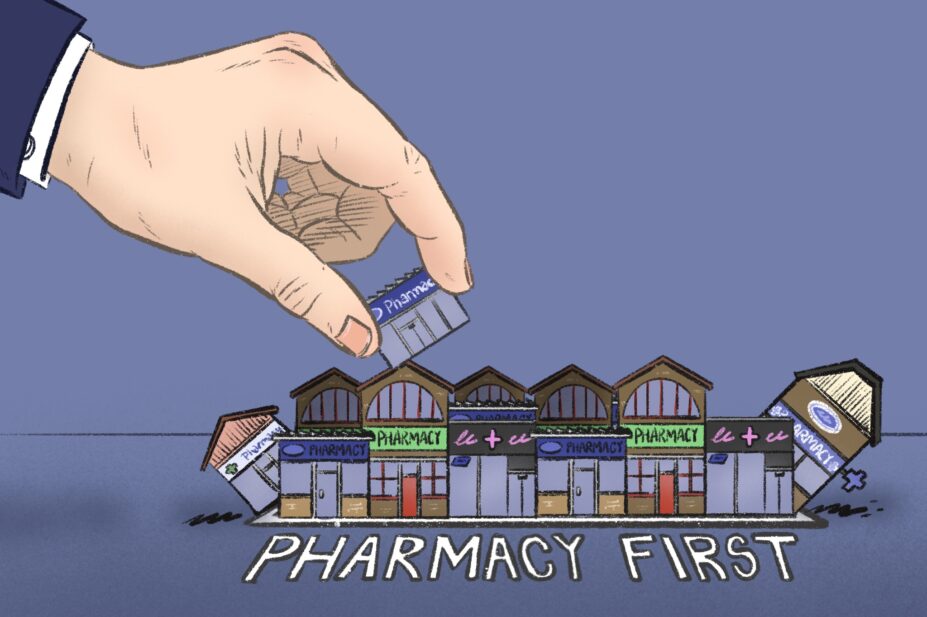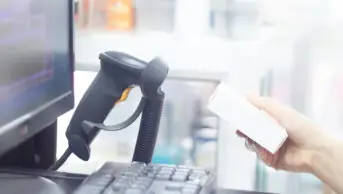
Wes Mountain/The Pharmaceutical Journal
The wait for a nationally commissioned Pharmacy First service in England is nearly over.
As the government announced on 16 November 2023, from the end of January 2024, pharmacists will be able to supply medicines to patients for seven common conditions: sinusitis, sore throat, infected insect bites, impetigo, shingles, uncomplicated UTIs in women and earache.
The service has been a long time coming. The idea of setting up a national minor ailments service, similar to Scotland’s NHS Pharmacy First service, which launched in 2020, was floated by former health secretary Sajid Javid in October 2021.
But even before then, in 2008, the government committed to exploring how best minor ailments schemes can be incorporated within the ‘Community pharmacy contractual framework’. The result was a patchwork of different locally commissioned minor ailments schemes that were later decommissioned by clinical commissioning groups to save money.
This time around, the government seems to have learned some lessons.
Unlike the locally commissioned minor ailments schemes, the national service will offer consistency across England with participating pharmacists able to supply prescription-only medicines under the same 24 patient group directions.
The national agreement for funding the service has been welcomed among community pharmacists who have been struggling financially for years. According to the agreement between Community Pharmacy England (CPE) and the government, pharmacists will be able to claim £15 for each consultation, in addition to a £1,000 monthly payment and a £2,000 set-up fee.
And, after many years of asking, this service has also proven to be the final push that was needed to give community pharmacies read-write access to GP records, also from January 2024.
Getting this right has the potential to be a significant asset to the NHS in its drive to reduce health inequalities in the long term
Overall, Pharmacy First has the potential to confirm what was first instilled in patients during the early days of the COVID-19 pandemic — that community pharmacies are a reliable and effective first port of call for NHS services.
To make this a success, the government will need to communicate clearly and accurately to patients about what they can expect, avoiding vague announcements such as prime minister Rishi Sunak’s post on X in May 2023 about Pharmacy First.
Commenting on initial plans for the service set out in the NHS’s Delivery Plan for Recovering Access to Primary Care, he wrote that “more medicines” would be available from pharmacies “from now on” — some eight months before the service would launch — causing confusion or disappointment for patients and more work for pharmacists.
Unlike the prime minister’s slogan, for example, when the NHS Pharmacy First service expanded in Scotland in 2021, the Scottish government clearly announced when the services would be available, who could access it and the types of treatments it would provide, linking to more information from the NHS. As of the end of March 2022, pharmacies in Scotland have carried out more than 3.3 million consultations under the NHS Pharmacy First service since its launch in July 2020.
Getting the communication right will not only relieve pressure from GP practices in the short term, but it also has the potential to be a significant asset to the NHS in its drive to reduce health inequalities in the long term.
Pharmacies have already proven their worth here. From clinical teams in Brent, London, that build relationships with patients who have not been engaging with their GP, to a pharmacist-led outreach programme in Derby that brings blood pressure checks into Pakistani community centres; local initiatives have shown remarkable efforts to mitigate health inequalities.
However, with all of the anticipation and the success of the service in Scotland, and a similar service available in Wales, the government must be prepared for Pharmacy First to roll out in England on a massive scale. CPE has predicted that the “vast majority” of community pharmacies will sign up, in line with the number currently offering the ‘Community pharmacist consultation service’ (CPCS). According to the latest data NHS Business Services Authority data, 6,878 pharmacies made at least one claim under the CPCS in July 2023.
While this may initially serve patients and the drive for health equality, it is noted in the details of the agreement that funding for the service is limited to 12 million consultations annually. Based on data from a survey conducted in 2022, CPE estimated that pharmacies carry out 865,982 minor ailments consultations weekly, which equates to more than 45 million each year.
The government must, therefore, carefully consider the equitable allocation of funded consultations to avoid revisiting the pitfalls of the five-year pharmacy contract that created “winners and losers” in the sector — or it will risk having fewer pharmacies from which to offer the service. PJ
- For more on treating minor ailments, visit our collection of learning resources

Health inequalities
The Royal Pharmaceutical Society’s policy on health inequalities was drawn up in January 2023 following a presentation by Michael Marmot, director of the Institute for Health Equity, at the RPS annual conference in November 2022. The presentation highlighted the stark health inequalities across Britain.
While community pharmacies are most frequently located in areas of high deprivation, people living in these areas do not access the full range of services that are available. To mitigate this, the policy calls on pharmacies to not only think about the services it provides but also how it provides them by considering three actions:
- Deepening understanding of health inequalities
- This means developing an insight into the demographics of the population served by pharmacies using population health statistics and by engaging with patients directly through local community or faith groups.
- Understanding and improving pharmacy culture
- This calls on the whole pharmacy team to create a welcoming culture for all patients, empowering them to take an active role in their own care, and improving communication skills within the team and with patients.
- Improving structural barriers
- This calls for improving accessibility of patient information resources and incorporating health inequalities into pharmacy training and education to tackle wider barriers to care.


